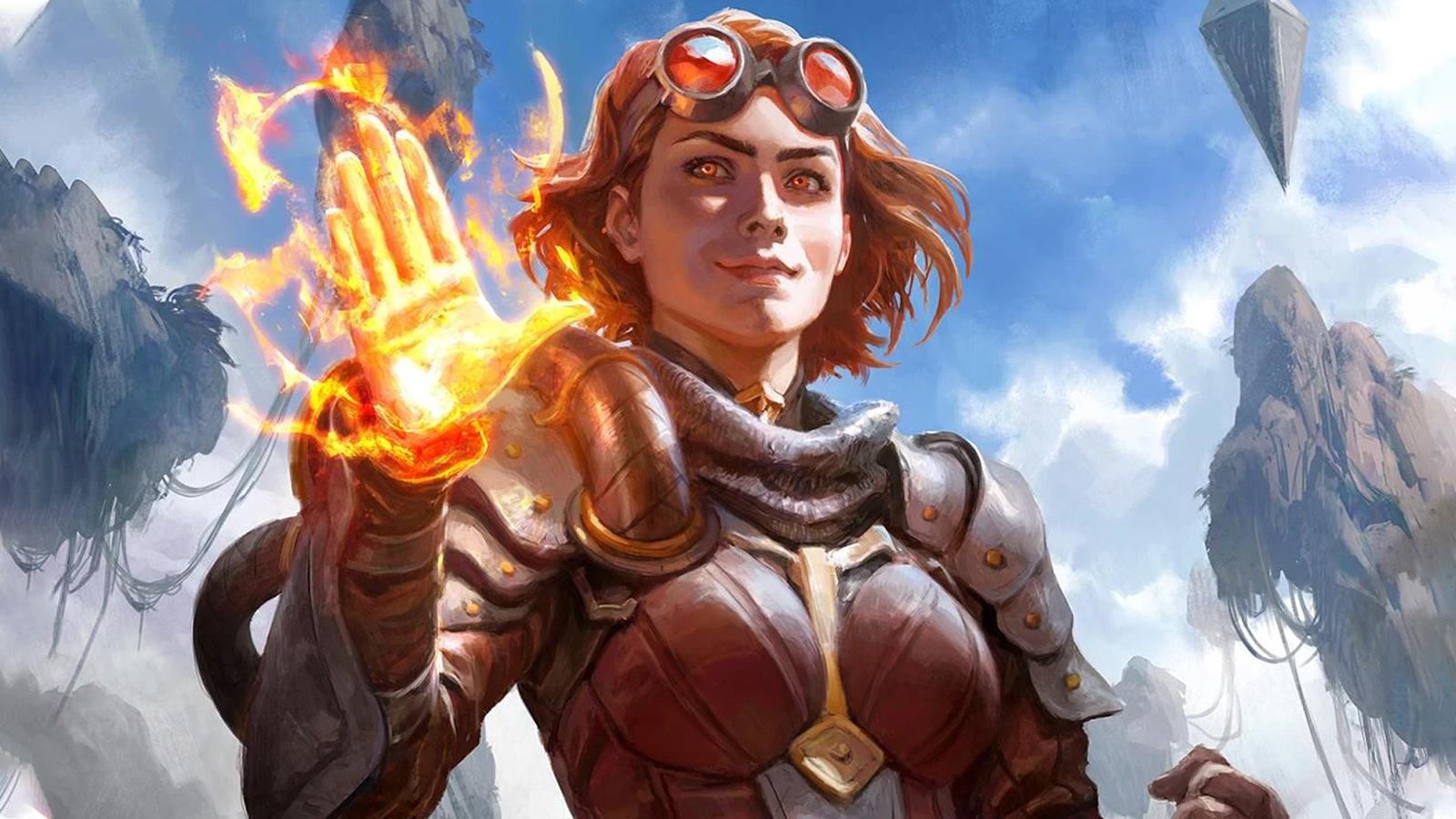Years go into making a Magic: The Gathering set as art and card design teams dedicate their time and passion toward creating a product everyone can enjoy. Creating The Lord of the Rings: Tales of Middle-earth (LTR) set took even longer than normal, resulting in the artwork leapfrogging the card design as major changes were taking place behind the scenes.
Wizards of the Coast senior art director Ovidio Cartagena spoke to Dot Esports at Summer Game Fest, describing challenges faced by both the art and card design teams while also dropping a unique fact about Sauron, the Lidless Eye.
“Sauron was going to start out as a Planeswalker,” said Cartagena.
The concept of Sauron evolved over time
Popular IP crossovers have taken place in MTG before, but not on the same scale as June 2023’s The Lord of the Rings: Tales of Middle-earth (LTR) set. Both Warhammer 40,000 and the upcoming Doctor Who Universes Beyond sets focus on Commander (Eternal format legal), whereas LTR is a full Modern-legal set designed for Limited Draft and Sealed play too.
The only full set WotC has created since the Universes Beyond IP crossovers began was Dungeons & Dragons: Adventures in Forgotten Realms (AFR) in 2021. It was a Standard-legal set that functioned and played like a Core Set, which was typically released as a late-spring and/or summer MTG set that had a minimal impact on the Standard format.
There are similarities between AFR, Core Sets, and The Lord of the Rings Universes Beyond set. But there is one major difference— the time it took to transform a massive IP that’s had its own TCG into an MTG Modern-legal set. It took three-plus years of development, according to senior content strategist Patrick “Trick” R. Jarrett, to complete the massive crossover. During the early stages, the design team changed Sauron, the Lidless Eye from a Planeswalker into a Legendary creature, according to Cartagena. “We did a lot of art before the card designs were final, he said. “Card design takes a long time, lots of testing, lots of iteration, and the art was a little ahead of it.
Showcasing only Legendary creatures was addressed during the “First Look” stream of the LTR set, citing flavor reasons behind the decision. Around the same time frame, WotC had also removed Sparks from over 10 Planeswalkers in the MAT set, with more promised to get revealed in upcoming Standard-legal sets.
If Sauron, the Lidless Eye was originally a Planeswalker, then it’s likely that Saruman, of Many Colors, Gandalf the White, and Radagast the Brown were also originally Planeswalkers within the LTR set.
Related: All MTG Lord of the Rings cards worth money
Creating new artistic designs from The Lord of the Rings books
Much like the card design team, those responsible for the set’s art also faced difficulties during the development of LTR when it came to the visual representation of an IP that already has an abundance of depictions.
“If someone paints something new in a card, you know what, maybe you can make it canon,” said Cartegena. “In Lord of the Rings, you can’t do that, you need to be thinking about the literature all the time.”
Cartagena also touched on the unique challenge of handling a property with such well-known interpretations, adding that, “The hardest part was approaching it with a fresh mind. Most of the time, you’re not really visualizing what you are reading, you’re remembering all the depictions because it’s a very iconic thing. Trying to get rid of the depictions for the time being and approaching it with fresh eyes was probably the biggest challenge.”

Sauron, The Lidless Eye started as a Planeswalker, just as the artwork illustrated by Yigit Koroglu started with the helm and evolved into a new depiction of Sauron unlike any other. Sauron sees all in the Lord of the Rings lore, and the artwork of Sauron, The Lidless Eye captures that specific and unique trait from the dark wizard.
Cartagena also had his own demands as senior art director, working on Phyrexian: All Will Be One and the upcoming The Lost Caverns of Ixalan set, along with “another couple down the line in the next coming months,” while putting the finishing touches on LTR. In addition to working on art direction for multiple MTG sets at the same time, the LTR set produced its own difficult pressures for Cartagena and the art team—they had to get this one right.
“I had a lot of pressure at the beginning,” said Cartagena. “And there’s a lot of pressure now that it’s out—I’m getting all the reactions and so on. But in the middle, I had fun because I knew there were going to be critics no matter what I do. And that released a lot of the pressure that I had because I thought, you know what, people are going to say whatever they want and let’s just do the best we can.”
A return to Lord of the Rings in Universes Beyond?
Despite the pressure and hard work, the LTR set is Cartagena’s favorite crossover, artistically and card design-wise alike. Cartegena even shouted out Peregrin Took as his favorite card.
“I’m still going back to the books to find comfort, you know,” said Cartegena. “I’m still thinking I should have done something else. You never stop working on your stuff.”
Is there a chance of a second LTR set in the future? Cartagena and the art team are already ready to answer the call. “This world is gigantic, there are so many cards. I wish—I hope we get to go back.”
The Lord of the Rings: Tales of Middle-earth will be available to MTG players through tabletop prerelease events that start on June 16. A digital launch is on June 20, followed by the global tabletop release on June 23.













Published: Jun 11, 2023 09:57 am